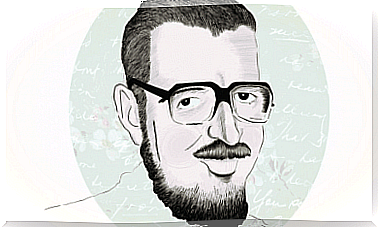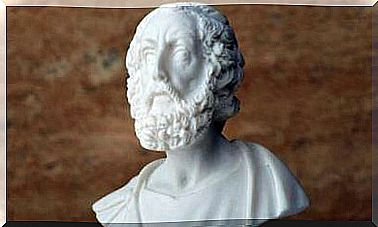Structuralism: What Are The Key Ideas Of This Current Of Thought?

The analysis of human experience, language and culture was essential for us to know ourselves as a species. There are several perspectives that converge on this point and strive to understand the rules that govern human thought and action. One of the most important is structuralism.
This is an approach to research and reflection in the social sciences that emerged in Europe in the mid-twentieth century. However, it is usually considered that its foundations were built in 1916, in the work Curso de Linguística Geral by the philosopher Ferdinand de Saussure. In this article, we’ll look at the most important ideas in this current of thought.
The definition of structuralism
Structuralism is a movement that is particularly focused on science – as we know it – from a social perspective. His works are characterized by attributing a fundamental role to language as a backbone in the development of our activity.
The emergence and expansion of structuralism were very important for the constitution of the main currents of thought in the world today. Although it is not as recognized as other movements, it is possible to see its impact on various disciplines, such as anthropology and sociology.
The linguist Ferdinand de Saussure laid the foundations of the structuralist perspective by considering the need to build logical simulacra that would allow us to understand facts of social life. That is, sets of implicit rules that govern the functioning of the human, mainly in relation to the meanings of language.
Thus, as a conclusion of this section, we will define the structuralist movement as the methodological and theoretical approach that proposes the maxim that in every sociocultural system there are structures or forms of organization that condition what happens within that system.
The interest of this current is nothing more than studying these specific structures and analyzing the connection between them, observing how they shape the various sociocultural systems and the activity that gravitates in their area of influence.
Key ideas of structuralism
Although the term and its approach may scare us, when we know its key ideas and map them out, understanding the worked hypotheses is not that difficult.
It is enough to look at our society and compare it with others to find structures that differentiate them. One of Structuralism’s central proposals in this context is that these differences define us and are the source of much of what happens around us.
Observation
The main research method of structuralism is observation. However, she doesn’t try to break reality into smaller parts so she can see them better. On the contrary, it tries to understand culture as a whole, also understanding the relationships between its different elements.
language as a system
In this theory, language is a system formed by a set of articulated units. In other words, language is understood as a set of elements that have several functional relationships between them. Thus, structuralists study language as something more than the simple sum of its parts, as an ’emergent’ process.
Descriptive approach and inductive method
This movement carries out studies from a descriptive approach, and for that it analyzes the social structures and the relationships that are established between them, reaching, in this way, a description of them. In addition, it uses the inductive method, proposing theories based on evidence found in society.

Methodological perspective of structuralism
Structuralism alone is capable of offering a methodology that provides perspectives and approaches to other human sciences. That’s why its influence on linguistics, history and cultural anthropology is so important.
Another aspect of the context of the structuralist movement is in its antecedents: in France, previously, existentialism gained strength – in the hands of Sartre – taking totally different approaches. But something changed in the 1960s, when the French philosopher De Saussure looked at Marxism and generated from it the context that led to the birth of structuralism.
Since then, important philosophers and anthropologists have been part of the movement, such as Noam Chomsky, Jean Piaget and Claude Levi Strauss, among many others. Understanding their work can help us on our journey as human beings to better understand the world around us today.









